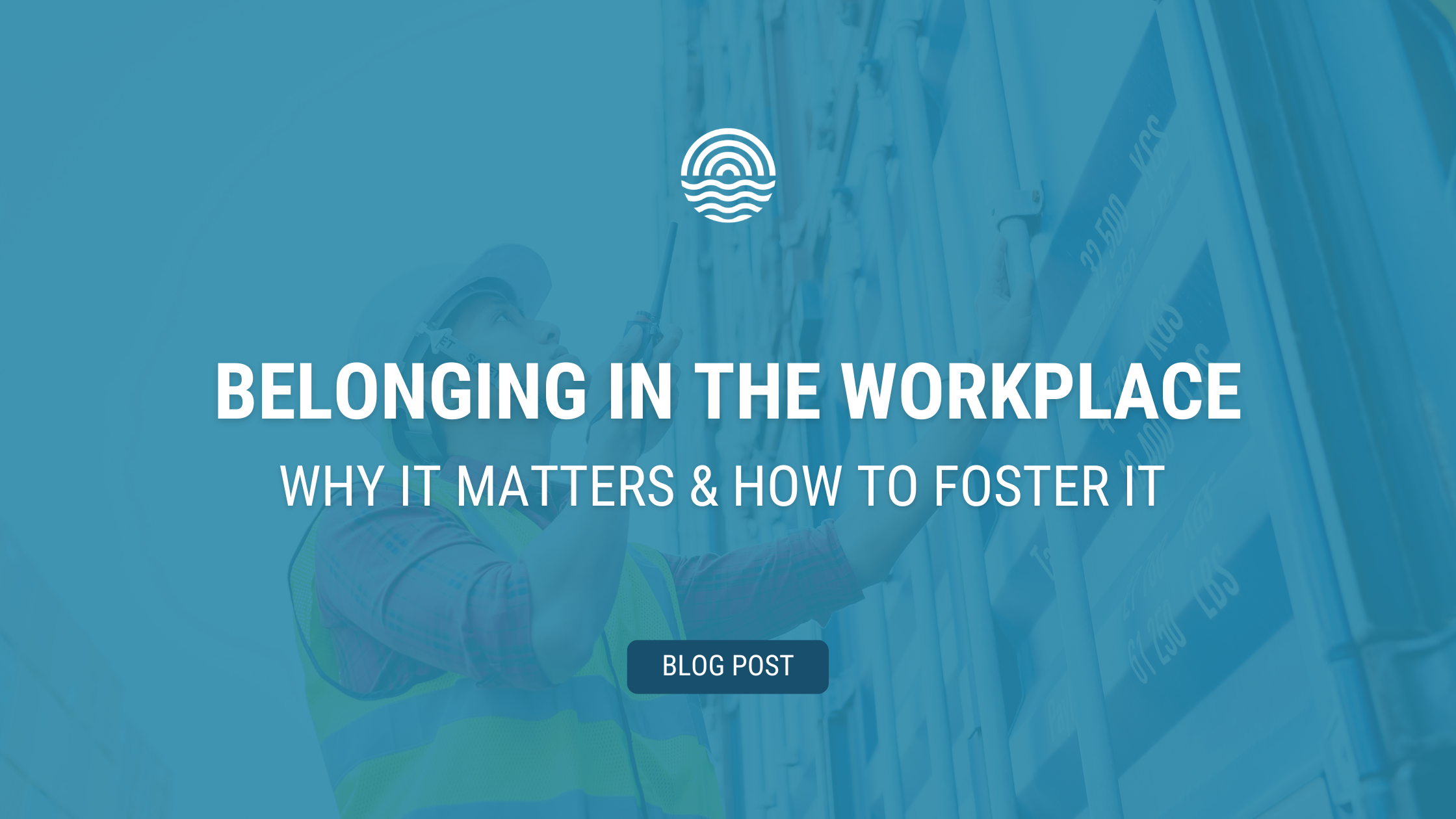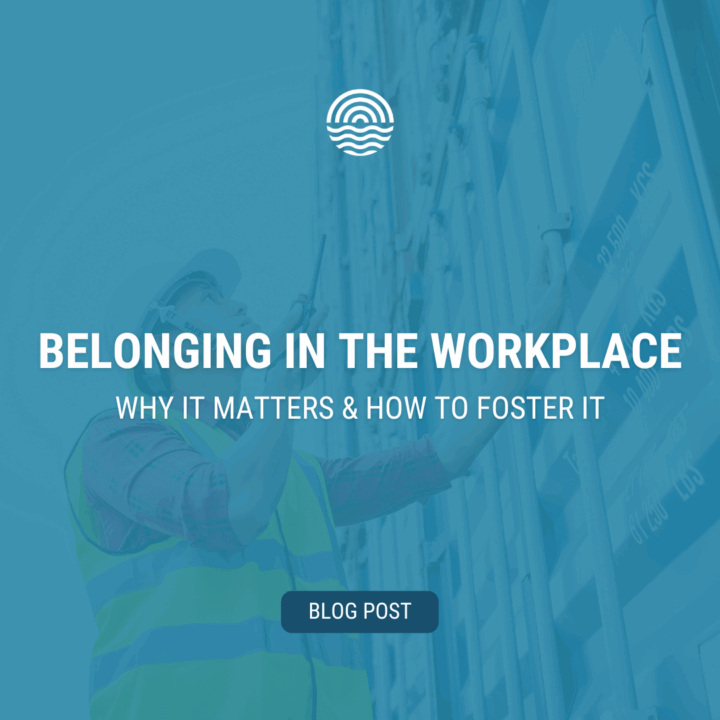
BLOG POST
Belonging in the Workplace: Why It Matters & How to Foster It
Imagine what our workplaces could look like if everyone felt a genuine sense of belonging.
Where every voice is heard, all perspectives are valued, and people don’t have to second-guess being themselves.
What would your team be capable of if everyone felt that way?
That’s what belonging is all about. And it’s more than a feel-good ideal — it has real, measurable impact on your team and on your business.
THE BUSINESS CASE FOR BELONGING
When people feel safe, supported, and seen at work, they’re more engaged, more productive, and more likely to stay.
In fact, research shows that high levels of belonging in the workplace are linked to:
- 50% less turnover
- 56% stronger performance
- 75% decrease in sick days taken
Belonging touches everything from retention and innovation to psychological safety and overall wellbeing.
HOW TO FOSTER A CULTURE OF BELONGING
Creating a sense of belonging doesn’t require flashy initiatives or big budgets. It’s built through consistent actions, thoughtful leadership, and a culture that treats people like people.
Here are three practical yet impactful ways to start.
1. LISTEN, THEN ACT
Belonging begins with trust, and trust begins with listening.
Make space for employees to share honest feedback about their experiences. That could look like anonymous surveys, open forums, one-on-ones, or Employee Resource Group-led conversations.
But listening isn’t enough on its own. Make sure employees see how their input leads to meaningful action. That’s how you build trust – and, more importantly – keep it.
2. CELEBRATE WHAT MAKES PEOPLE DIFFERENT
Belonging doesn’t mean everyone has to blend in.
Instead of hiring for “culture fit,” focus on “culture add.” Encourage people to bring their unique experiences, perspectives, and working styles to the table — and show appreciation for the value that difference brings.
This could be as simple as rethinking how you recognize team contributions, or highlighting diverse voices across your internal and external communications.
3. EQUIP YOUR LEADERS TO LEAD INCLUSIVELY
Managers set the tone for team culture. If they’re not trained to recognize bias, address microaggressions, or create psychologically safe spaces, belonging becomes harder to build and easier to break.
Invest in training that helps leaders understand the difference between intention and impact. Help them develop the skills to lead with empathy, fairness, and flexibility. And above all, model what belonging looks like from the top down.
FINAL THOUGHTS
Belonging can be your competitive advantage.
When people feel like they belong, they’re more likely to stay, grow, and thrive. And when your team thrives, your whole business benefits.
So, if you’re looking to improve retention, performance, or wellbeing — start with belonging. One conversation, one leader, one intentional action at a time.
Want help building more inclusive workplace practices?
The Waterfront DEI Council provides tools and hands-on support to help our members and their teams embed accessibility and inclusivity into their policies, practices, and workplace culture — creating spaces where everyone feels empowered to thrive on the waterfront.


